11 Filler Plants That Add Depth and Dimension to Your Garden
If you have empty space in your landscape, consider adding these expert-recommended plants for their beautiful foliage and blooms.
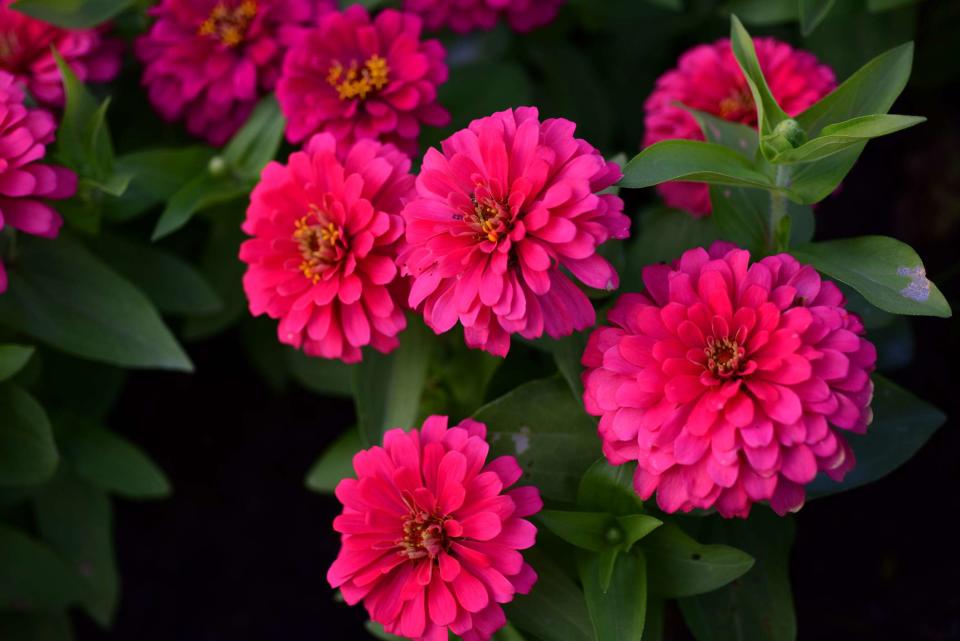
Growing filler plants in the garden is a wonderful way to utilize space and add dimension to a landscape. Filler plants can be anything from herbs and flowers to grasses and shrubs that create visually appealing areas and balanced compositions. These types of plants can be used whether you have a large garden and want to add more texture to a space or for containers to create a beautiful arrangement.
Benefits of Filler Plants
There are many reasons to grow filler plants. They provide texture and numerous hues and reduce the amount of exposed soil, helping suppress weeds. Filler plants are important, filling in empty spaces while adding depth and interest to your garden, says Linda Vater, a gardening expert with the Southern Living Plant Collection.
You can extend the flower season by growing fillers that have various bloom times, too. By doing so, filler plants provide vital nectar sources for pollinators, benefiting the insect population and improving pollination, says Mary Phillips, Head of Native Plant Habitat Strategy/Certifications at the National Wildlife Federation.
When planting in pots, filler plants provide food and habitat to insects and wildlife. "Fillers in containers can help connect fragmented habitats and provide nectar to pollinators traveling through urban areas," says Phillips. Another benefit of using filler plants in pots is that it creates microclimates. Phillips says this provides shelter for beneficial insects like ladybugs, lacewings, and praying mantises.
Ahead, our gardening experts share their favorite filler plants for containers, garden beds, and landscaping.
Related: Why You Should Plant Sedge Grass—and 10 Great Varieties to Grow
Aster
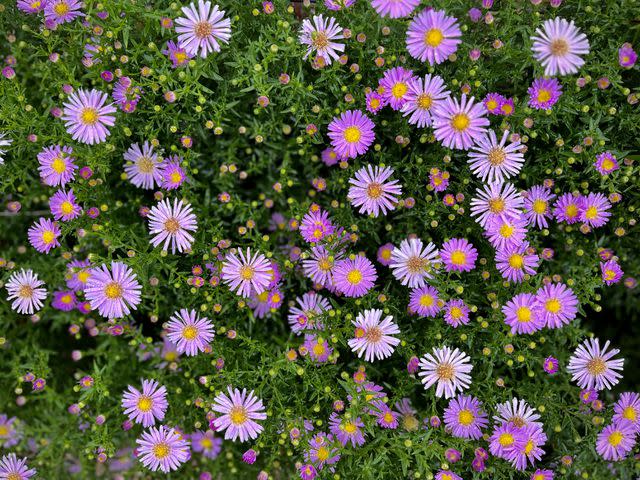
Dani Bazelkova
If you're looking for gorgeous flowers in vibrant hues, you'll want to plant native aster. Most aster varieties bloom from August to October and produce fragrant flowers, says Phillips. Easy to care for, asters spread easily, filling in spaces in the garden. "Native asters provide vital late-season nectar for butterflies, bees, and other pollinators [and are a] larval host plant to several species of butterflies," she says.
Zone: 3 to 8
Height and width at maturity: 1 to 4 feet tall x 1 to 4 feet wide, varies by variety
Care requirements: Full sun, well-drained soil
Bells of Ireland
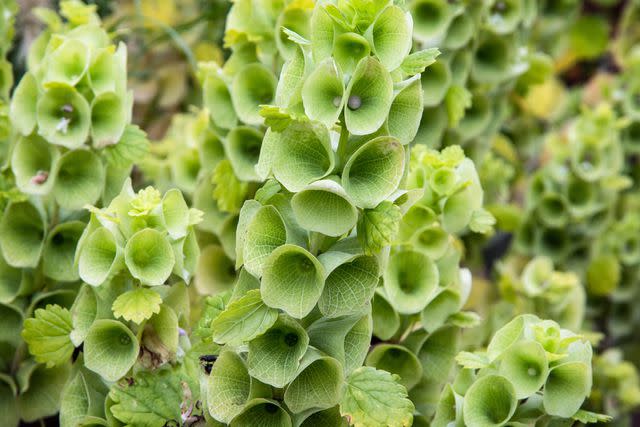
Vrabelpeter1 / Getty Images
Bells of Ireland is a wonderful filler plant that grows in cooler weather and blooms in late spring and early summer. With chartreuse foliage and flowers, this unique plant provides a fun texture to any landscape or garden bed. "Bells of Ireland is a beloved filler and cut flower that can be easy to sow and grow when recognized as a cool-season hardy annual," says Lisa Mason Ziegler, author of The Cut Flower Handbook.
Zone: 2 to 11
Height and width at maturity: 2 to 3 feet tall x 12 to 18 inches wide
Care requirements: Full to part sun, well-drained, moist soil
Common Yarrow
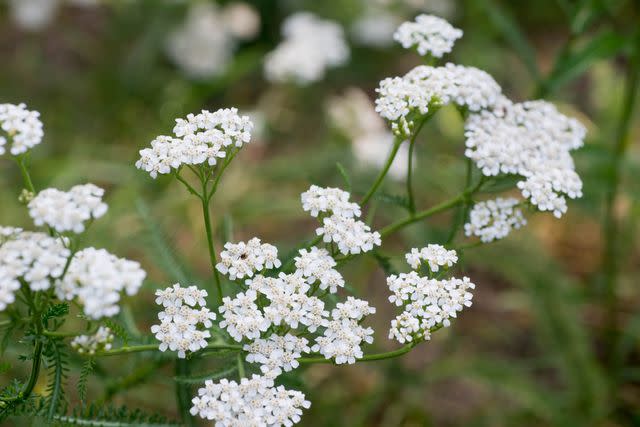
aga7ta / Getty Images
Want to add a filler plant to your garden bed but don't have a lot of time to tend to your flowers? Grow common yarrow. "This plant thrives on neglect, tolerates poor soil, drought, and heat [and is an] ideal choice for large areas that might be challenging to maintain," says Phillips. With its feathery foliage and clustered flowers, yarrow adds beautiful texture to any space. Another bonus is yarrow attracts butterflies, bees, and hoverflies and is an important larval host plant for many butterfly and moth species, adds Phillips.
Zone: 3 to 9
Height and width at maturity: 2 to 3 feet tall x 1.5 to 2 feet wide
Care requirements: Full sun to part shade, loamy or sandy
Basil
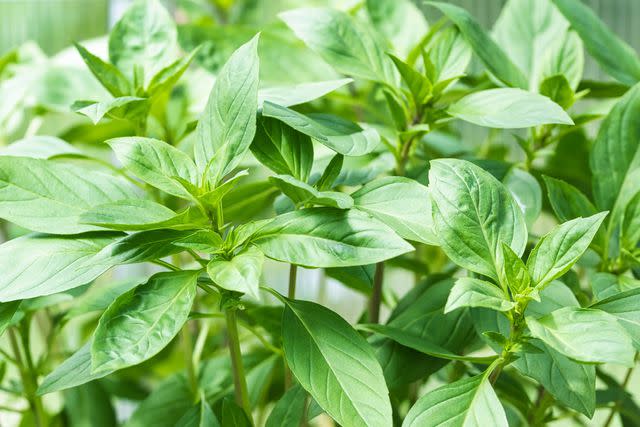
Ewa Saks / Getty Images
A wonderful herb to grow as a filler plant in your edible garden, container gardens, or flowerbeds is basil. Ziegler loves the variety Mrs. Burns Lemon Basil for its fragrant aroma that smells like a freshly squeezed lemon. The chartreuse foliage brightens up any landscape, making this a great filler plant. As a bonus, you can use lemon basil in your cooking as well as using it as a cut flower when it's in bloom. "This variety has smallish leaves and grows tall, topping out at 30 inches in my gardens, making for an excellent cut flower," says Ziegler.
Zone: 10 to 11
Height and width at maturity: 18 to 24 inches tall x 18 to 24 inches wide
Care requirements: Full sun, well-drained, nutrient-rich soil
Related: How to Grow and Care for Basil Plants—Indoors and Outside
Goldenrod
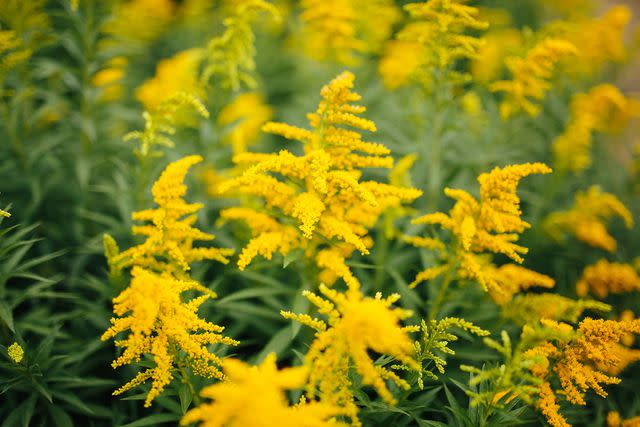
A native plant that attracts many pollinators, goldenrod is a favorite as a filler plant in the garden and floral bouquets. Also known as solidago, this perennial plant produces long arching stems with numerous yellow flowers. "Goldenrod is one of the sturdiest and longest-lasting fillers and a personal favorite," says Ziegler. "I have several native habitat islands on my Virginia flower farm that include large patches of goldenrod."
Zone: 2 to 8
Height and width at maturity: 1.5 to 5 feet tall x 1 to 3 feet wide
Care requirements: Full to partial sun, well-drained soil
Marigold
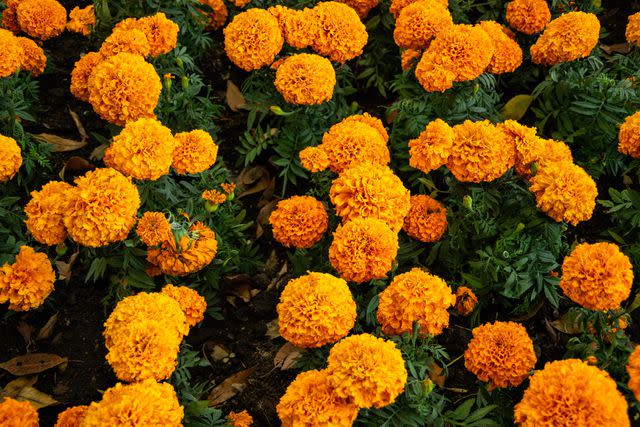
Simon McGill / Getty Images
Marigolds complement any space, whether you're growing an edible garden or an array of vibrant hue flowers. These plants are easy to grow, too. "Marigolds produce vibrant, colorful flowers in shades of yellow, orange, and gold, adding visual interest and brightness to the garden," says Carrie Spoonemore, co-creator of Park Seed's From Seed to Spoon app. "They tolerate a variety of soil conditions, are relatively drought-resistant, and are relatively low-maintenance, making them suitable for beginner gardeners or areas with less-than-ideal growing conditions."
Zone: 2 to 11
Height and width at maturity: 4 inches to 4 feet tall x 6 to 24 inches wide
Care requirements: Full sun, moist and well-drained soil
Miss Lemon Abelia
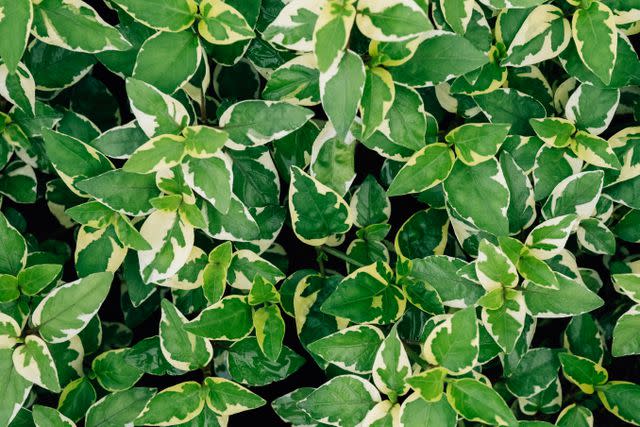
Getty Images
Need a filler plant for a little space or to add vertical contrast? A hybrid plant, Miss Lemon Abelia "is perfect for smaller gardens or filling in gaps between taller plants," says Vater. A bushy, compact plant, this variety has evergreen variegated foliage in the summer and light pink blooms in the fall.
Zone: 6 to 9
Height and width at maturity: 3 feet tall x 4 feet wide
Care requirements: Full sun to part shade, well-drained soil
Pink Muhly Grass
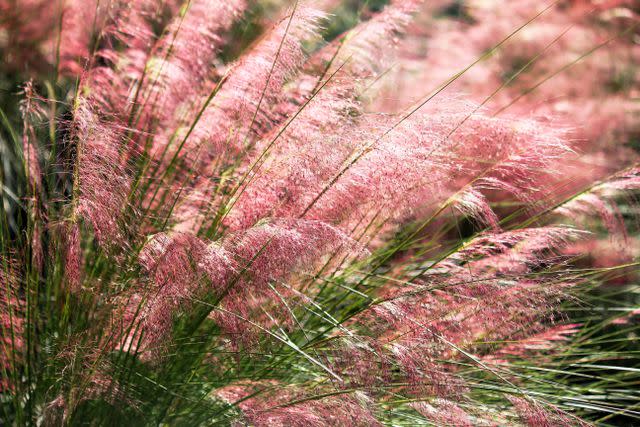
Zen Rial / Getty Images
Have a landscaped area and want to add easy, low-maintenance grass? Grow pink muhly for its long green shoots and enjoy pink to purplish flowers in the fall. Phillips says this is a larval host plant to the skipper butterfly. In the winter, the seed heads of the flowers are an important food for birds, says Phillips.
Zone: 5 to 11
Height and width at maturity: 1 to 3 feet tall x 2 to 3 feet wide
Care requirements: Full sun, well-drained soil
Related: How to Grow and Care for Native Ornamental Grasses—and 10 Varieties to Plant in Your Yard
Rudbeckias
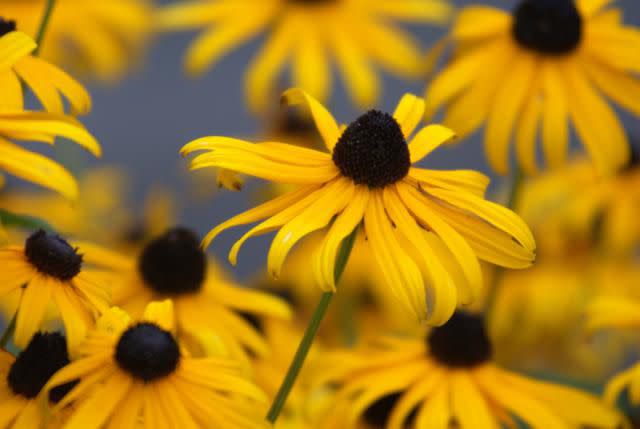
Rudbeckias are a genus of flowers, and one of the most well-known is the black-eyed Susan. Easy to grow, these produce yellow flowers that resemble daisies but larger. "I grow many cool-season hardy annual rudbeckias with a filler favorite variety being 'Sahara' for her muted colors, making it an excellent backdrop to other flowers," says Ziegler. "This family [of flowers] is known for its beautiful, long-lasting blooms in the vase and is also a favorite of native bees." She also recommends 'Prairie Sun,' 'Goldilocks,' 'Maya,' and 'Cherry Brandy' to grow as filler plants in the garden.
Zone: 3 to 9
Height and width at maturity: 2 to 3 feet tall x 1 to 2 feet wide
Care requirements: Full sun, well-drained, moist soil
Related: 15 Fall Flowers That Will Keep Your Garden Blooming All Season Long
'Sunshine' Ligustrum
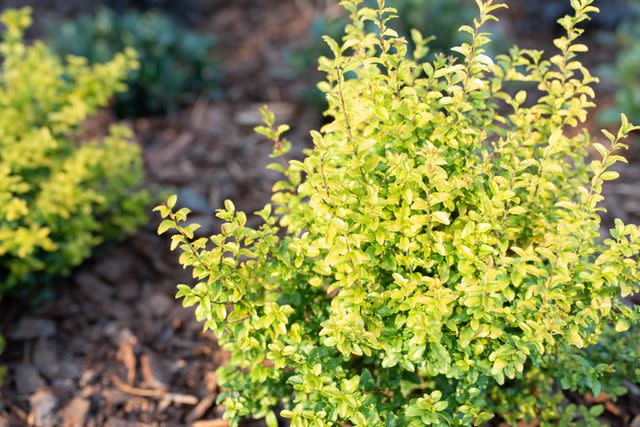
Tatyana Consaul / Getty Images
Grow sunshine ligustrum as a filler plant to complement shrubs or grow within your flower beds. This plant stuns with vibrant chartreuse-yellow evergreen foliage and creates textural contrast in the garden, says Vater.
Zone: 6 to 10
Height and width at maturity: 3 to 6 feet tall x 3 to 4 feet wide
Care requirements: Full sun, well-drained soil
Zinnias
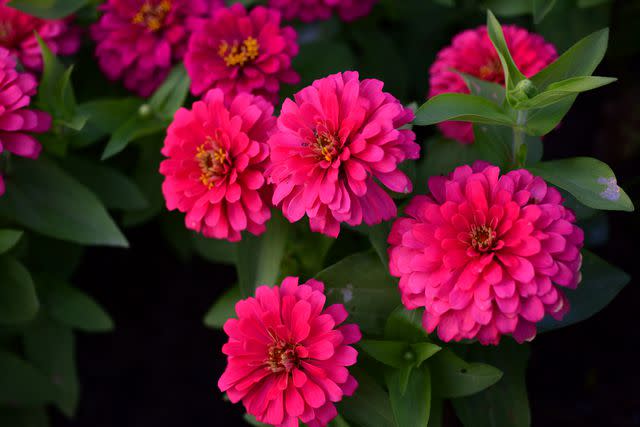
Looking for continuous blooming flowers as fillers in your landscape? Grow zinnias. "Zinnias produce colorful blooms in various shapes and sizes, ranging from single petals to double and semi-double flowers," says Spoonemore. "Their prolific flowering habit ensures a continuous display of color throughout the growing season, making them ideal as filler plants." Another advantage of planting these as filler plants is that zinnias attract beneficial insects, including bees and butterflies, and provide important food sources for them.
Zone: 3 to 10
Height and width at maturity: 1 to 4 feet tall x 6 to 18 inches wide
Care requirements: Full sun, well-drained soil
Related: How to Grow and Care for Zinnias
Read the original article on Martha Stewart.

